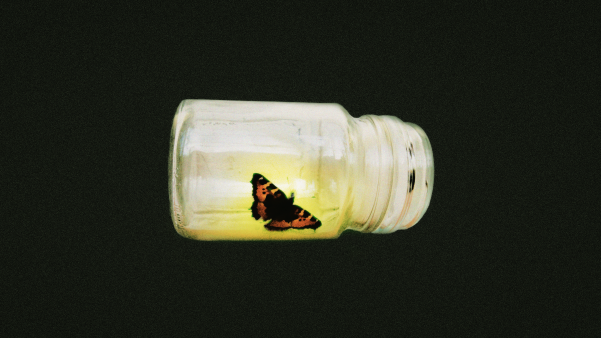These are violent days in America, and wherever I go, I’m asked about it. Why is the crime rate out of control? Why is common decency so uncommon? When mayhem becomes mundane in a so-called civilized land, what can stem the tide?
The questions intensified after the now infamous “wilding” last April. The senseless crime in New York’s Central Park left us all shocked and outraged.
Few people are unfamiliar with the facts of the case. The young investment banker had been warned about jogging by herself at night; but, as a friend remembered, “She was the kind who said, ‘Why would anybody want to hurt me?’ ”
But a group of boys between the ages of 14 and 17 did want to hurt her. There was no special reason. She was raped, stabbed, beaten, and left for dead. Somehow, she survived.
Frighteningly Normal
New York police are familiar with gangs, drugs, neglect, abuse, and how young people from such backgrounds can turn on others. But these kids were a bit different. They lived on the edge of Harlem, to be sure. But four of the youths lived in a building with a doorman. One was enrolled in parochial school. Another had just received an A on a book report. Another played the tuba in his school band. These kids were frighteningly normal.
They were normal—except that none voiced any remorse about the crime. In jail the boys joked about the attack as if they were boasting of video-game victories.
In every commentary on this horrific case is the same question I’m so often asked. Why?
Some answers are as outrageous as the crime itself. Forensic psychologist Shawn Johnston explained that the boys are “damaged … in pain inside … acting out their pain on innocent victims.” As Harvard educator Alvin Poussaint put it, “They’re letting out anger. There’s a lot of free-floating anger and rage among a lot of our youth.” And psychologist Richard Majors summed up, “We have to be honest. Society has not been nice to these kids.”
So these boys are only victims of our not-so-nice society—not depraved, just deprived?
Well, the usual psycho-socio babble doesn’t work here. Bad influences may well be at work in these youths’ lives, but, as Washington Post columnist Haynes Johnson observed, those allegedly involved “did not come from the classic ‘pathology of poverty’ background that is supposed to be a sociological breeding ground for violence and criminality.”
More Than Illness
But why would “good” kids do such a terrible thing?
I think I know.
During a recent trip to Europe, I met with a psychiatrist in a model correctional institution. She explained how 71 percent of the inmates there had been classified as mentally abnormal, or psychiatric cases, since they had committed particularly heinous crimes. Since people are inherently good, the doctor inferred, anyone who does evil must be mentally ill. So inmates with this “illness” were sent to her institution to be “cured.”
While mental illnesses can generate horrible crimes, we cannot label all violent acts as manifestations of madness. Thus I was skeptical of the psychiatrist’s claims. And just a few days after my visit, my skepticism was horribly borne out.
Part of the “cure” for one inmate, a convicted rapist, was a short furlough under the escort of a 26-year-old female guard. Prison officials evidently considered it therapeutic for him to attend a movie with a woman, a step on his road to “normalcy.” He didn’t get very far down that road. Instead, not far from the prison gates, the inmate battered and murdered the young woman.
Violent tendencies are not an illness. Criminal behaviors are not symptoms of a disease. We cannot explain away awful acts through sociological factors or odd chromosomes or poverty or germs or drugs. While these can surely be factors in criminal behavior, the root cause of crime has not changed since Cain.
It is sin.
The Bible teaches that men and women’s natures are inherently depraved. Without restraints, sin will emerge and wreak its havoc on whatever crosses its path. And we surely live in an age in which traditional restraints have crumbled.
“She Was Nothing”
Reports on the Central Park case have cited the “randomness” of the gang’s attacks. Before the group accosted the lone woman jogger, they had already assaulted at least six other people and thrown rocks at cars and bicyclists. As one reporter put it, they attacked “anything that moved.”
Random violence, devoid of motive or meaning, is supremely chilling. It is also supremely logical. If man is not created by God in God’s image, if human beings and their environment are simply the result of random collisions of atoms, there is no intrinsic distinction between “good” and “evil” human behaviors, and people have no innate value. (“She was nothing,” said one of the alleged rapists about his victim.) So perhaps these boys are actually existential purists bent on living out the consequences of their belief system.
This means that for the rest of us, braving Central Park is a game of chance. You can jog along on East Drive, take a left at 102nd Street, and if the park animals get you, that’s the roll of the dice. A young New York girl described the jogger’s losing spin on the roulette wheel this way: “It is like she committed suicide.”
One cannot listen to the evening news in America today without being assured daily of the existence of evil. Sometimes, as in the Central Park attack, its perpetrators are frighteningly normal. They’re kids who write book reports and smile at the doorman and play the tuba.
But even as the dichotomy between their normality and their evil terrifies us, we should not be surprised. If there is no God and people are but randomly created beings, moral decisions are equally random.
As Dostoevski wrote, if there is no God, then everything is lawful—and the highest law is the law of the self. As the Central Park case reminds us, that is the law of the jungle.










